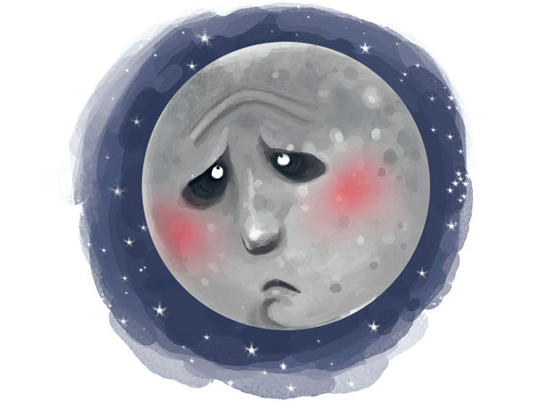
Throughout history and in most cultures, the moon has been the subject of myths of all kinds, some rather amusing, but others serious. Most recently, the horrendous earthquake and tsunami in Japan was blamed on the moon.
The full moon has always been the culprit when things go wrong. We have all seen werewolves in movies, humans who turn into wolf-like creatures on a full moon night. We have all heard claims of lunar effects on human behaviour, especially on full moon nights.
But there are other, more entertaining legends about the moon: that two full moons in the same month, as will occur in August 2012, produces severe weather, that chickens lay more eggs when the moon is in its last quarter, and that a full moon can even make a woman pregnant!
When astronomy made substantial progress, the nature of the moon and its relation to earth came to be much better understood, and most of those myths were forgotten or no longer taken seriously.
Super myth
The full moon, however, continues to be associated with extreme weather and natural disasters for which people have ‘scientific' explanations.
The devastating earthquake and tsunami in Japan has been associated with the ‘super full moon' of March 19. Some commentators, relayed by a number of print and web media, including some highly respectable ones, claimed that a "super full moon" was expected to produce extremely strong tides and earthquakes on earth.
What is a ‘super full moon' and why should it produce tsunamis, quakes or strong tides?
The moon's orbit is elliptical and so it sometimes is a bit closer to earth and sometimes a bit farther. When the moon is both full and closest to Earth, it looks a little bigger, hence the ‘super' adjective.
Now, many people know that tides are (mainly) produced by the gravitational pull of the moon, and that the sun plays a small role, so tides become more pronounced during full or new moons.
On an average, the water rises by about half a metre during high tide, and reaches a height of about 80 cm at new or full moon.
‘Super full moon', however, increases those tides by about 15 per cent, so that we could expect 92cm water levels — nothing resembling a tsunami! Furthermore, the Japanese disaster occurred on March 11, when the moon was in its first quarter, not full moon, and in that position, tides are weakest!
Still, someone noticed that the dates of 9/11/2001 and 3/11/2011 combine to give 12/22/2012, the presumed date for the end of the world — the Mayan calendar story. But not only has this 2012 ‘end of the world' story been debunked by many scientists, and I will gladly address it in a future column, no one should take such numerological mumbo jumbo seriously.
The other enduring myth and misconception regarding the full moon is the increase it is claimed to produce in crazy and dangerous human behaviour. Indeed, the word ‘lunacy' itself comes from ‘lunar'. And there is a largely widespread belief that crimes increase during full-moon nights.
Here again, people with some education find "scientific" explanations to the effect by recalling the gravitational attraction that the moon exerts on the earth's waters (the aforementioned tides). As the faulty argument goes, our bodies are in large part made of water, so it makes sense that blood will be lifted up, like a high tide, to our brains, where the increased pressure will produce neurological imbalances.
The error in this explanation is that tides only occur when the size of the water body is large —hundreds of kilometres, at least. Indeed, as I often tell my students, has anyone seen tides in their swimming pools? No, likewise there are no tidal effects on our bodies, hence no lunacy effects.
Statistical evidence
My students often follow up this little lecture of mine by emailing me various internet references where full-moon crime spikes are "documented". But serious studies of this claim have shown it to have no solid statistical evidence.
And finally, the moon continues to occupy a special place in the astrological folklore, which is unfortunately still widely believed — even by educated people. In astrology, the moon represents our inner, emotional, personal dimension. The moon has a ‘maternal' nature, very different from the sun's ‘paternal' character. Furthermore, the moon represents intuition and ‘unconscious knowledge', whereas the sun is more ‘rational'.
Needless to say, there is no truth to these characterisations; no one has ever found any correlation between people's personalities and the moon's or sun's positions in various constellations.
Let us hope that more education and real, correct scientific knowledge allows us to distinguish facts from folklore and … not to blame the moon for phenomena such as earthquakes and tsunamis.
Nidhal Guessoum is Professor of Physics and Astronomy at the American University of Sharjah.










